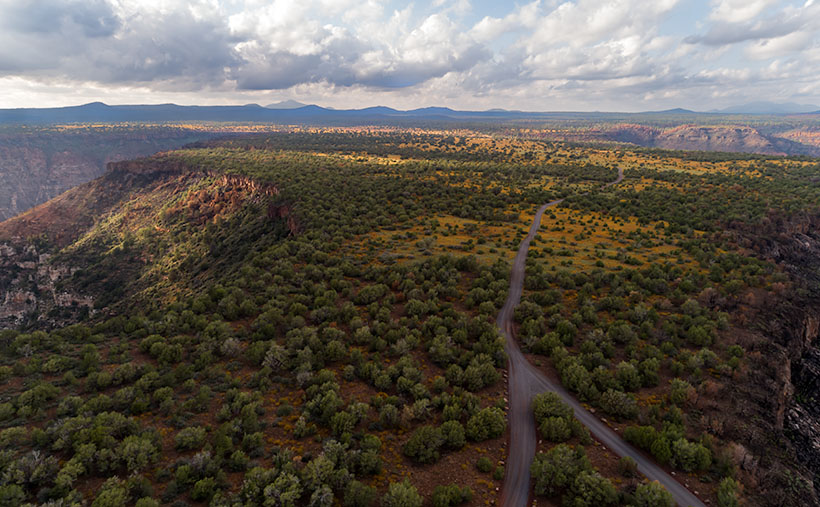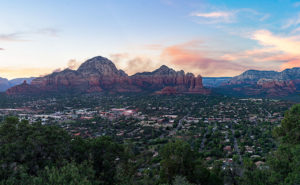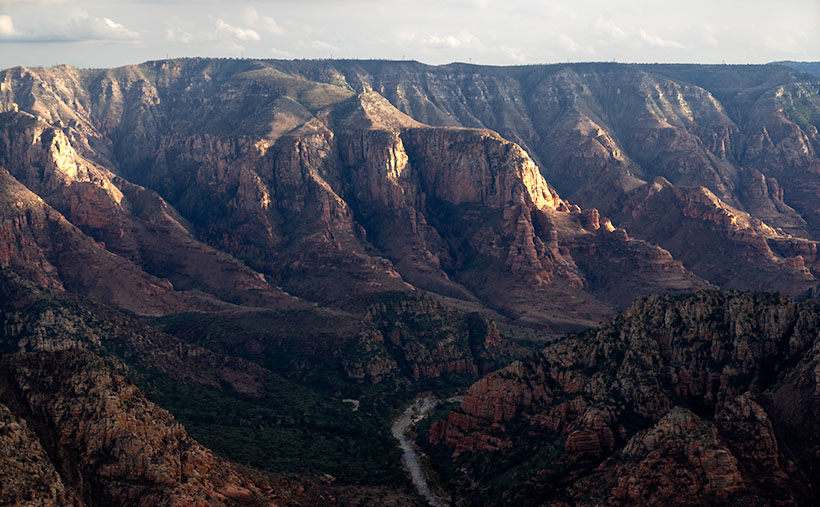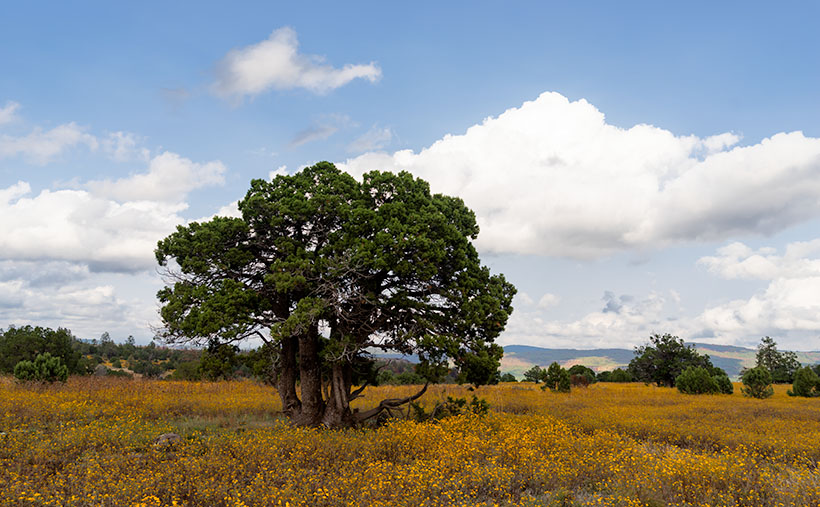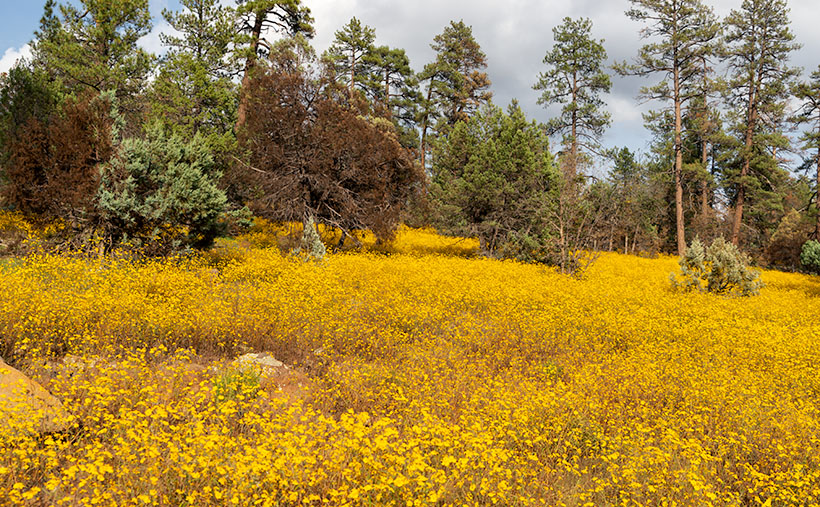Queen Anne, my darling wife, flew east last month to join her sisters for a week in New England. Supposedly, it was an Autumn-Leaves tour, but they went to Salem in October during a full moon. I’m no math whiz, but I know what you get when you combine four and ten. That’s right—WITCHES!
I’m a big boy, so I wasn’t about to spend my time alone sulking and drowning my sorrows in a tub of Cherry Garcia—I intended to treat myself to a night on the town—another town—in another state. Laughlin, Nevada, is an easy three-hour drive via Kingman, across Golden Valley, through the Black Mountains, and down to the river. I booked a cheap casino hotel room for Wednesday night and set off, determined to lose some money on a craps table.
The downside of weekdays in Laughlin is that it’s mostly closed. The big weekend crowds are working, so the remaining patrons are retirees like me. Half of the restaurants are dark, and some casinos don’t open the gambling tables. You have to search for a place to eat and find some action, so I ended up at the Riverside Casino. They had a couple of working Blackjack tables and one craps table. I think the staff outnumbered the players when I joined. Two people were on the right of the stickman, so I claimed an open spot on the left.
Trying to get a feel for the player’s moods, I looked at the faces around the table. Because masks were mandatory, it was hard to tell who was doing well. A woman across from me wasn’t even a whole face—only a pair of brown eyes behind jewel-rimed glasses and a silver-blue hairdo peering over the table’s edge. Like my mom, her short hair had enough hairspray to keep it in place between weekly salon visits. She had a few chips on the rail pushed to one side so they wouldn’t block her view of the playing field.
I placed my bet; someone threw the dice twice and lost. Then, we all took a turn bouncing the dice off of the far wall when the silver-haired lady stood up. Until then, I didn’t realize she was sitting. Even when she stood, she wasn’t much taller. She scooped up her remaining chips into a clutch. I thought she was leaving. Instead, she began pushing a walker towards my side of the stickman.
As she maneuvered her tricked-out lavender walker behind the dealer, I saw that she had dressed to party. She had on a very sparkly silver lame top and black spandex pants—which, quite frankly, bagged a bit. Weirdly, as I watched her, I suddenly heard Lenard Cohen singing his tune—Closing Time—in my head:
“…And the place is dead as Heaven on a Saturday night
And my very close companion
Gets me fumbling gets me laughing
She’s a hundred, but she’s wearing
Something tight…”
When she got close, she spoke through her mask in a voice from years of smoking Chesterfields, “Hey, big boy. You need a good luck charm.”
“Hi,” I smiled (a useless gesture behind my mask) and introduced myself, “I’m Jim.”
“Nat-ly,” she replied.
“It’s a pleasure to meet you, Natalie.”
“No. I’m from Flatbush. It’s Nat-ly,” she corrected with furrowed eyebrows.
“Sorry. What kind of good luck charm are you talking about?”
She explained, “Well, every high roller knows it’s good luck to have an attractive woman beside him while he rolls the dice. You’re alone, and I’m the best-looking dame in the joint.”
Just glancing around the room was enough to confirm that she was right. “What’s in it for you?”
“Well, you tip me each time I blow on your dice for good luck.”
I was curious, “Do you do this for everyone?”
“Na,” she blushed and went on, “The girls and I spotted you the minute you came through the door.”
“That was because of my dashing good looks and natty fashion sense, I bet.”
“No. You’re the only man in the casino standing upright without a cane. You know how cougars are; we like ’em young and stupid.”
With that, Nat-ly positioned her seat to my right and plopped herself down. On my roll, she blew on my dice for luck. I made my point once, so her luck wasn’t bad. “You’d do even better if I hung off your shoulder,” she offered, “It’s only $20 bucks.”
As she shuffled into position with her walker, I noticed it wasn’t just any old walker—oh no. This thing was tricked out. The wheels sparkled with silver hubcaps, and a small rearview mirror was angled just right so she could check her six. On the front, she had a basket full of essentials: a pack of Chesterfields, a rhinestone coin purse, and what I can only assume was a custom-made cup holder for her drink. This was a woman who came prepared.
Nat-ly caught me eyeballing her ride. “Yeah, pretty sweet, huh? Got it for a steal from that nice boy on Pawn Stars. Ain’t it somethin’?”
I nodded, impressed. “Must turn a few heads.”
“More than you, honey. But don’t worry, you’re cute for an amateur.” She gave me a wink that made me wonder just how deep this rabbit hole of flirtation was about to go.
After she blew on the dice and I made my point, she leaned in close—well, as close as someone who needs a walker can lean—and whispered, “You know, I used to be quite the looker back in my Mustang Ranch days. They called me the queen of the floor.”
I wasn’t sure if she was talking about the casino or…well. Either way, I kept my poker face on.
“I bet you were,” I replied, tiptoeing across a tightrope suspended over a canyon of uncomfortable truths.
Her eyes twinkled mischievously. “You ever been to Mustang Ranch, big boy?”
I coughed and pretended to study the felt of the table like it was the most exciting thing I’d ever seen. “Can’t say I have.”
“Pity,” she sighed, blowing more cigarette-scented luck across my dice. “But you can call me Queen Nat-ly tonight.”
“Right,” I mumbled, “Your Majesty.” I couldn’t help but picture her in some sparkly crown, probably with matching orthopedic shoes.
As I rolled again and somehow avoided crapping out, she started to hum, her raspy voice crackling like the old vinyl records my parents used to have. I strained to listen. Was that Frank Sinatra? No. Wait…Dean Martin? Then I caught the words. “Fly me to the moon…”
Of course, why wouldn’t the woman sitting next to me, flirting and stroking my arm with a cane, be serenading me with a Sinatra classic? This felt like a fever dream, yet I was a willing participant.
Given her stature, I couldn’t imagine how she could reach that high, so my curiosity bettered me. I handed her a couple of chips. She reached down and pulled a cane from the tool rack attached to the walker’s side. Then she raised it, hung the crook over my shoulder, and gently stroked it back and forth. I almost laughed, but she was so adept that it felt alright.
She said, “For $5 more, I’ll play with your ear.” When I turned, she held one of those trash-grabbers for me to examine. I declined, so she slipped it back into its rack spot.
The night passed, and the dice went clockwise around the table twice while we talked. She worked at the Mustang Ranch until the Feds seized it, and she retired. Since the Treasury Department managed the business, she got a federal employee pension. After she quit, she moved south from Reno to enjoy a warmer climate and affordable housing. Now, she spends her free time watching the tanned muscle boys ride jet skis up and down the river.
I managed to hold onto my bankroll an hour and a half before it ran out. As I packed my things, I saw Nat-ly slumped over—asleep. I knew the dealers wouldn’t let her stay at the table alone, and I didn’t want to wake her. So, I pushed her to the nearest quarter slot machine and parked her in front. I reached into my pocket and threw all but one of my quarters into the tray. The last, I stuck in the coin slot. I knew security wouldn’t bother her if a bet were on the table. With that, I left and went to my room. I have pictures to shoot tomorrow so that the day will begin early.
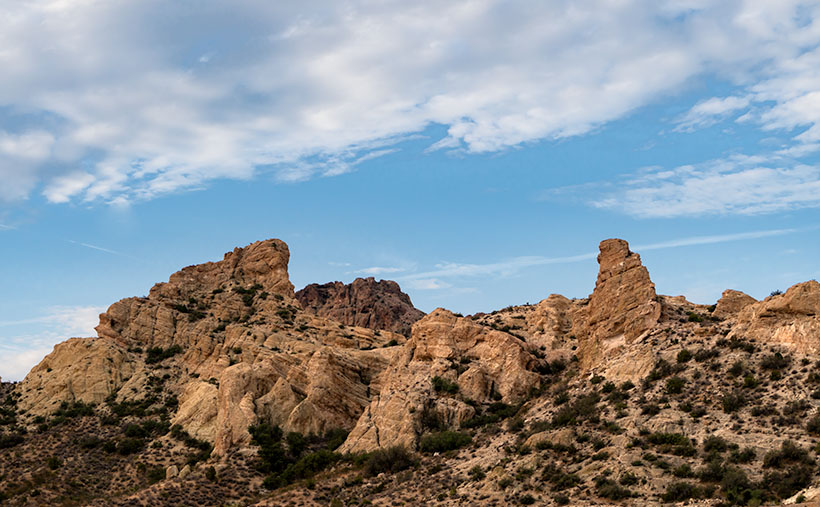
The last time I made it through the Black Mountains of Mohave County was during last year’s trip to Oatman, where I nearly lost my mind watching burros treat the town like it was their buffet. Every time I drive through these mountains, it’s like catching up with an old friend who’s always got a new trick up his sleeve. This time, Union Pass caught my attention—a stretch of road that, depending on the light, either looks like a peaceful desert oasis or the aftermath of a Hollywood disaster flick.
I decided to pull over at the hilltop on my way home, determined to capture the rugged beauty of this desert landscape. I mean, how could I resist? The morning sun played peek-a-boo through thin clouds, casting soft shadows across the rock formations. The kind of light makes photographers drool and desert rats scratch their heads, wondering what the fuss is about.
This week’s featured image comes from my morning scramble at Union Pass. I named it after the location because that’s where I parked the truck, hopped out, and started pacing up and down the highway with my camera like a man on a mission. The morning light, softened by a delicate veil of clouds, created a perfect mix of shadows—.just enough to make the rock layers stand out without giving it the overexposed look of a tacky postcard.
I’m sure these are the same Tuff layers we learned about during our Organ Pipe National Monument visit. Tuff is the aftermath of volcanic eruptions—a thick blanket of ash that hardens over time into solid rock. What makes Union Pass fascinating is how those layers have been cracked and thrust into the sky during the tectonic tantrum—a geological fit of rage—formed the Black Mountains. It’s like nature’s geology lesson, written across the landscape in jagged peaks and crumpled ridges.
If you’re curious about what else I captured at Union Pass, swing by next week. I’ve got another shot that showcases just how wild and beautiful this stretch of the Black Mountains can get. Trust me, you won’t want to miss it!
Until next time
jw

